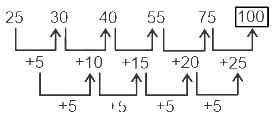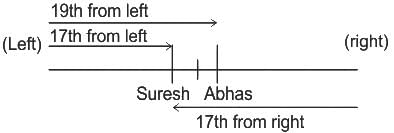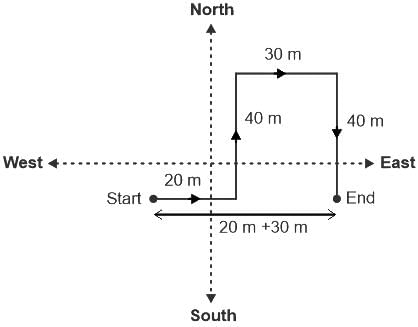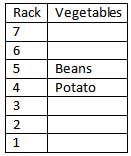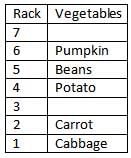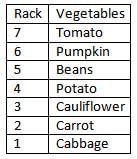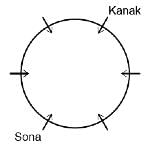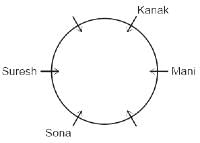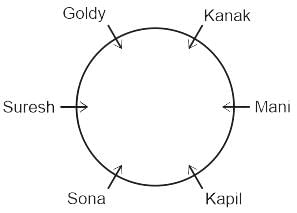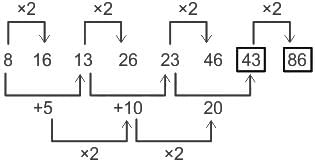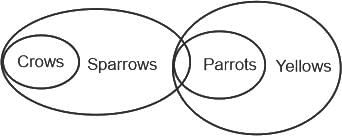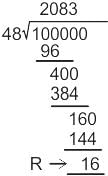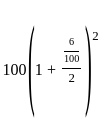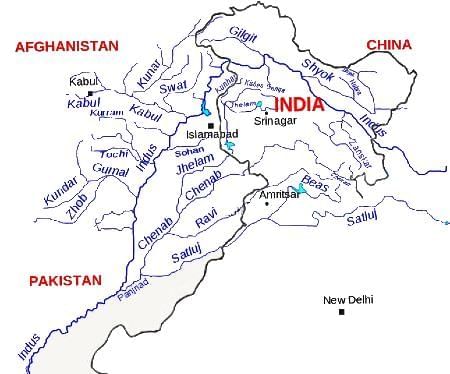DGAFMS Group C Mock Test - 1 - DGAFMS Group C MCQ
30 Questions MCQ Test - DGAFMS Group C Mock Test - 1
Select the number from the given options to complete the series.
25, 30, 40, 55, 75, ___
25, 30, 40, 55, 75, ___
In a row of children, who are facing north. Abhas is 19th from the left end and second to the right of Suresh, who is 17th from the right end . How many children are there in that row?
Priya started walking towards east for 20 m, then took left and walked for 40m, then turned right and walked for 30 m. Now she turns right and walks 40 m. How far is priya from her starting point?
What should come in place of ? in the given series based on the English alphabetical order ?
TUV RXR ? NDJ LGF
Carefully read the given information and answer the given questions.
The compartment of 7 vegetable is kept on a rack. Each box of stacks has a special vegetable i.e. Carrots, Cauliflower, potatoes, cabbage, beans, pumpkins and tomatoes. The boxes is computed in the order of 1, 2, 3 ..... from the bottom of the rack.
i) Carrot has been placed in any box above cabbage but not above the potato.
ii) Cauliflower is not kept at either top or bottom box.
iii) Potatoes are placed in a box kept in the middle of the rack.
iv) The beans are kept just top of the potato box.
v) There are as many boxes under the pumpkin as there are above the carrot.
Which box has the tomato kept?
Six friends are sitting in a circle. All of them are facing the centre. Kanak sits third to the right of Sona. Kapil is an immediate neighbour of Mani. Goldy sits second to the right of Mani. Sona is an immediate neighbour of Kapil and Suresh.
Who sits to the immediate right of Goldy?
8, 16, 13, 26, 23, 46, ? ?
What will come in place of the question mark?
Read the given statements and conclusions carefully. You have to take the given statements to be true even if they seem to be at variance from commonly known facts. You have to decide which conclusion's logically follow/s from the given statements.
Statements: All crows are sparrows. Some sparrows are parrots. All parrots are yellow.
Conclusion I: Some crows are parrots.
Conclusion II: Some yellow are parrots.
Select the correct mirror image of the given combination when the mirror is placed at 'PQ' as shown.

A shopkeeper wanted to sell ₹2,700 worth of products. But he had two options — giving two successive discounts of 10% and 15%, respectively, or giving a single discount of 25%. What was the difference between the two options?
The smallest six-digit number which is completely divisible by 4, 8, 12 and 16 is:
Area of the triangle is equal to area of the square, if the base and height of the triangle is 98 cm and 36 cm, then, the perimeter of the square (in cm) is:
The pie - chart shows percentage - wise distribution of teachers who teach six different subjects. Study the pie chart and answer the question:
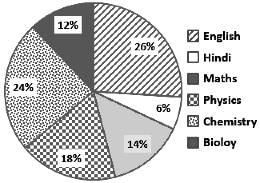
Total number of teachers = 1650
What is the total number of teachers teaching English, Maths and Physics?
The effective annual rate of interest, corresponding to a nominal rate of 6% per annum, compounded half-yearly, is:
Select the most appropriate option to fill in blank number 2.
Select the most appropriate option to fill in blank number 3.
Fill in the blanks by choosing the correct preposition from among the options given below.
My sister was not required to conform _________ the traditional ways of her husband's family.
Select the most appropriate synonym of the given word.
Bully
Direction: Read the passage and answer the following questions:
Once upon a time in a lush village, nestled between rolling hills and sparkling streams, lived a young boy named Arlo. Arlo was known for his unparalleled swiftness; he could outrun any child or beast in the land. However, Arlo’s pride in his speed often led him to boast and belittle his friends. “Speed is all that matters!” he would claim, dismissing the virtues of patience and teamwork. His attitude isolated him, and over time, he found himself without companions, racing only against the wind.
One day, a great storm threatened the village, and the elders needed a vital message delivered to the neighboring village for help. Despite his speed, Arlo struggled against the storm alone. On the verge of giving up, his former friends, who had heard of his plight, found and supported him. Together, they braved the storm and delivered the message. Arlo learned that true strength lies not in individual prowess but in unity and humility. From then on, he valued his friends’ diverse talents, understanding that every virtue, including patience and teamwork, holds its own unique power.
What lesson did Arlo learn from his experience?
Which of the following are three tributaries of the Indus river Himalayan rivers?


